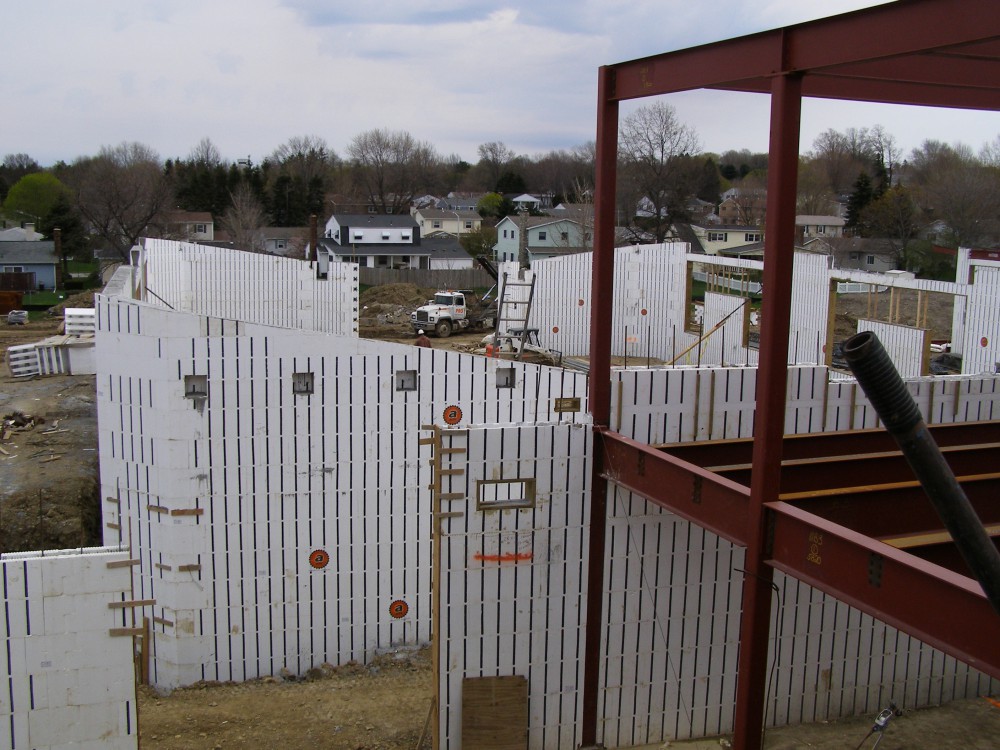Posted on August 20, 2020
Parents want to trust that their children attend a school built to resist every natural disaster. Without that trust, feel anxious whenever there's severe thunderstorm warning or tornado watch.
Hurricane Katrina demonstrated the vulnerability of schools to nature’s wrath. When Katrina struck New Orleans, only 16 of the city’s 126 schools escaped significant damage. In the aftermath of the hurricane, architects took a hard look at school construction. Increasingly, they specify the use of insulated concrete forms (ICFs) in some capacity.

Advantages of ICFs in School Construction
Today, there are more than 300 U.S. schools featuring ICF construction. How does a school construction technique prove so popular that the count of completed projects soars to more than in less than 20 years? By delivering the qualities that educators, parents and students all value. ICFs deliver durability, safety, energy efficiency, sound attenuation and sustainability. They also promote the design flexibility that architects value.
Durability
Schools built with ICFs last many decades, a century or more in some instances. Modest maintenance costs are easier to budget for. Such costs are also spread out over many years.
Safety
The structural load resistance of ICFs delivers the safety school districts seek. According to one study, “The ICF walls resisted a maximum lateral load 6 to 8 times the maximum loads resisted by the frame wall panels.” ICF construction protects students against very high winds and flying debris.
Passive fire protection is very important in schools. Along with fire-resistant doors, windows and vents, ICFs slow the spread of a fire. In one example, four-inch ICFs achieved an ASTM E119 fire rating of two hours. The rating doubled for six-inch blocks.
Energy efficiency
In many applications, an ICF wall is a more energy-efficient wall. Compare a steel-reinforced ICF and its continuous insulation with wood frame and other options.
Energy Use Intensity is an important measure of energy savings. While the EUI in Climate Zone 4 averages 73, it is just 18.9 at Kentucky’s Richardsville Elementary School. The five Kentucky schools with the lowest EUIs save taxpayers more than $1.3 million per year. They all feature ICF construction. ICF walls, solar panels and a geothermal installation all contribute to Richardsville Elementary’s enduring status as the nation’s first Net Zero school. The school district receives a $30,000+ payment from the local utility each year.
Sound attenuation
Schools include a mix of classrooms, offices, cafeterias and gyms. It's important to isolate noisy gyms. Loud sounds in a classroom impact student concentration. A typical wood wall has an STC rating of somewhere between 35 and 49, according to HUD. By comparison, the STC rating of ICF walls is often in the fifties.
Design flexibility
ICF blocks come in the many shapes needed to maintain continuous insulation. These include straights, corners, 45-degree corners, tees, radiuses and taper tops.
Reduced construction time
On average, ICF construction reduces construction schedules 10 to 15 percent. This is a big plus for many school districts. Here’s a video describing how ICFs saved time during the construction of Richardsville Elementary in Kentucky.
ICF Case Studies in PA School Construction
The frequency of tornadoes in Kentucky made the state an early adopter of ICF construction. Today, there are more than 50 ICF schools in Kentucky. Pennsylvania school administrators increasingly consider ICF construction. Here are several examples of successful ICF school projects.
Clearview Elementary School
The frequency of tornadoes in Kentucky made the state an early adopter of ICF construction. Today, there are more than 50 ICF schools in Kentucky. Pennsylvania school administrators increasingly consider ICF construction. Here are several examples of successful ICF school projects.
Shikellamy Middle School
The Shikellamy School District wanted to give middle school students their own building. For years they shared facilities with the community’s high school students. The school district chose ICF construction for its long service life, fire and storm resistance and energy efficiency.
The new Shikellamy Middle School in Northumberland, PA, delivers on all counts. The three-story structure makes widespread use of ICF walls. The project required 4,000 cubic yards of concrete. Earthen berms, rain gardens and underground stormwater filtration contribute to the innovative design.
ICF construction allowed for a downsized heating system consisting of two condensate boilers. Natural gas heating costs are more than two-thirds lower. Costs were $0.49 sqft. Now, they are only $0.15 sqft.
Today, more than 600 students enjoy the school's 24 classrooms, six science labs and two tech suites. The school district’s experience is such that it is open to more ICF projects in the future.
Kappen Aquatic Center - Overbrook School for the Blind
School officials at The Overlook School for the Blind sought a replacement for a century-old structure. ICFs were part of an energy-efficient answer. ICF construction was an estimated 43-percent more energy-efficient than conventional construction.
Since many students have sensitive hearing, sound attenuation was another important goal. ICFs, an acoustic roof deck and fabric ductwork all reduce sound transmission.
The Kappen Aquatic Center became the first natatorium to be LEED Platinum-certified.
Learn More
SpecifyConcrete.org is a website of the Pennsylvania Aggregates and Concrete Association (PACA). Our staff welcomes your questions about ICF school construction. Please contact us at your convenience.
